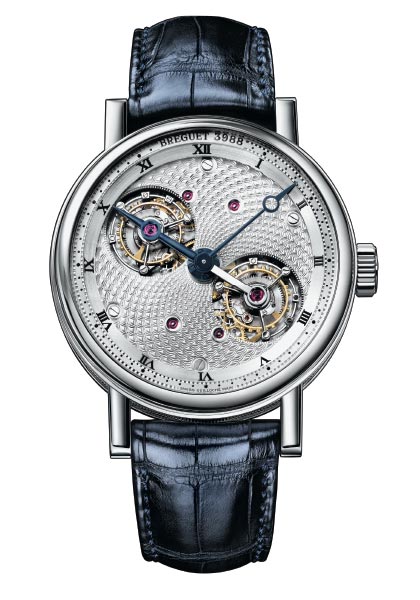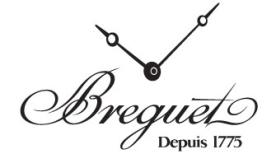The tourbillon is a technical colossus that, in addition to its primary vocation of providing accuracy, can also boast a little poetry and style. Breguet delivered a remarkable interpretation in 2006 with its Double Tourbillon – a feast for the eyes as well as a jewel in timekeeping.
Over the past 220 years, the tourbillon has lent itself to a wide array of interpretations that were most definitely undreamed-of by Abraham-Louis Breguet when he filed his original application for a patent, granted on 26 June 1801. Tourbillons are often single, but can also be double or triple, as well as offering inclined, low/high-frequency and many other variations. One hitherto unseen combination was that of a double rotating tourbillon with a single hand.
“And yet, it turns”
Breguet’s idea was to double the tourbillon’s efficiency by opting to place two of them at the heart of the movement rather than one. The two tourbillons are independent from each another, but connected by means of a differential. The principle is quite simple: even though the pair turn in harmony, they are not perfectly synchronised to within a single oscillation. That means that to power the watch, an average rate needs to be established. The analogy most often used to explain this is that of the wheels of a car as it goes round a bend: the outer wheels rotate slightly faster than the inside wheels, because they have to cover a greater distance; to keep the vehicle on course, the two speeds are aggregated into an average speed by means of a differential. In watchmaking, each of the two tourbillons plays a role in compensating for the effects of gravity. The average of the two produced by the differential will thus be twice as accurate as the compensation provided by a single tourbillon.

Tourbillon on a Plate
Breguet then went a step further by assembling these two tourbillons on a rotating plate. This offers further benefits from a time-keeping point of view: in addition to each tourbillon rotating on its own axis, they both revolve together on a rotating disc; this results in both of them covering twice as many positions again as each single tourbillon would otherwise.
The time – 12 hours – taken for the plate to complete one revolution is also significant, and this is where Breguet’s expert aesthetic touch comes into play. By choosing this particular rotation speed, invisible to the naked eye, the bridge of one of the two tourbillons can be used to indicate the hours. As a result, only one central hand indicating the minutes is neeeded to complete the system. There is no seconds display as such, although either tourbillon can potentially act as one, since they both rotate in one minute. No fewer than 676 components are required to bring this whirling choreography to life. Unveiled in late 2006, the Double Tourbillon was first available in platinum as reference 5347 in Breguet’s Classique Grande Complication collection. Three years later, in 2009, the firm produced an alternative model in rose gold. A third variation (5349) was to follow, once again in platinum but this time set with jewels on the lugs, caseband, crown, bezel, and rotating plate. In all three versions, the timepiece’s caseback is hand-engraved with a representation of the solar system.
Pioneering
The Double Tourbillon 5347 is an atypical, winsome timepiece that’s every bit as fun as its technical accomplishments, setting several milestones that were unprecedented at the time when the brand first started to develop it in 2003. The rotating dial gives it a ‘mysterious’ side that’s now done really well by Cartier, and although the twin tourbillon idea has since been taken up by Greubel Forsey and many others (including Hysek, Manufacture Royale, Roger Dubuis, Arnold & Son, Zenith, TAG Heuer, Purnell, and Louis Moinet); the 5347 nevertheless retains many attributes (including the priority of the patent, the finishes, and its sheer durability) that make it a historic creation. It is part of a long-running story and has been built to last. A new iteration based on the same principle, the Classique Double Tourbillon Quai de l’Horloge, was released in 2020.
*This year GMT Magazine and WorldTempus have embarked on the ambitious project of summarising the last 20 years of the Tourbillon in The Millennium Watch Book - Tourbillons, a big, beautifully laid out coffee table book. This article is an extract. The Millennium Watch Book - Tourbillons is available on www.the-watch-book.com, in French and English.






